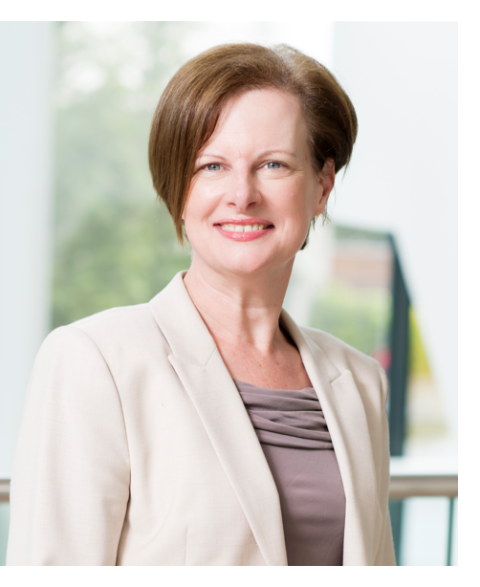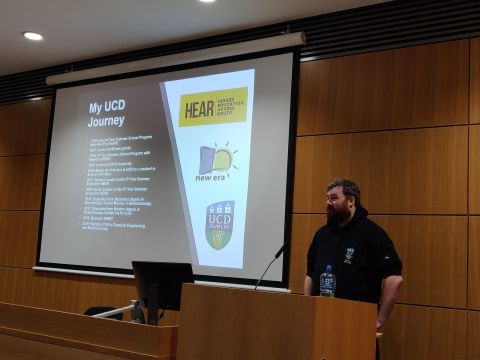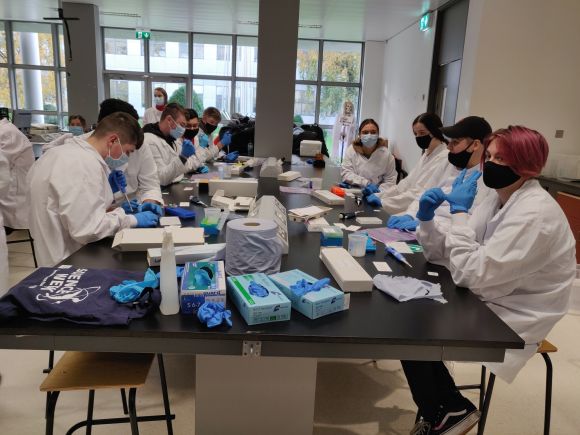In the Irish school system, secondary students have a unique opportunity in their fourth year, when most students are about 15 years old, to explore a workplace environment for 3 weeks. “They don't have any set curriculum,” says Elaine Quinn. “It's a time that they can explore work placements and what they might do after they leave school. And it's also about building transferable skills for the workplace.”
 Quinn (shown at left), manager of communications and education for the Conway Institute of Biomolecular & Biomedical Research at the University College Dublin (UCD) and program site director for ABE Ireland, saw another opportunity within this transition year—a chance for students to shadow PhD and postdoctoral students working in science labs in a structured work program. What began as a 1-year pilot, focused on reaching students from low socioeconomic status schools, has now grown into the CuriosiTY program, with 2 more years of funding from Science Foundation Ireland.
Quinn (shown at left), manager of communications and education for the Conway Institute of Biomolecular & Biomedical Research at the University College Dublin (UCD) and program site director for ABE Ireland, saw another opportunity within this transition year—a chance for students to shadow PhD and postdoctoral students working in science labs in a structured work program. What began as a 1-year pilot, focused on reaching students from low socioeconomic status schools, has now grown into the CuriosiTY program, with 2 more years of funding from Science Foundation Ireland.
The CuriosiTY program builds on the work of ABE Ireland using the ABE labs and equipment to introduce secondary students from underserved communities to biotech work while enabling UCD graduate and postgraduate students to engage in public outreach. The university students receive training with the ABE labs to assist the secondary students. The new funding covers transportation and lunch for the participating students. The first year included 72 students from 18 schools, with 24 students participating each week. For this next phase, which will cover 8 weeks over 2 years, another 192 students will be able to participate.
“We are excited that this program will help in building capacity in our PhD and postgraduate students to make sure they are engaging with younger people coming through and inspiring them in science,” Quinn says. “Moreover, to be able to do so while encouraging equity, diversity, and inclusion is vastly important, as not everyone has the same level of access to such programs.”
So far, the greatest challenges have come from adapting the program in its first year, 2020, because of the COVID-19 pandemic. Masks and distancing made it possible for students to come to the university, but it changed the dynamic by limiting the interactions students could have within the lab setting.
Quinn credits her work as program site director for ABE Ireland with providing the infrastructure for such a program to grow. The freely available equipment, curriculum, and training materials from ABE help to further remove barriers to students and schools participating in biotech labs. Quinn also sees the new funding as a way to help introduce new schools and teachers to the ABE program. She and her team have been notifying participating schools about ABE, giving the opportunity for teachers to sign up for training.
Giving students in Ireland more exposure to hands-on bioscience is critical, Quinn says. For example, Ireland’s biology curriculum does not have a practical lab component for DNA gel electrophoresis. If a teacher wants to incorporate hands-on learning, it’s on the teacher to find a way to do it. “There are time constraints and the actual cost,” she explains. “In Ireland, there is no opportunity for a teacher to borrow research-grade equipment in biology, so ABE uniquely gives the opportunity to the teacher to actually expose their pupils to practically doing this in the classroom.”
Quinn, whose background is in clinical laboratory sciences, herself remembers having to learn from photographs in secondary school. Her teachers had to run experiments offsite and then teach about them in the class later. “Whereas ABE students can run the DNA gel in the classroom and see the results within 15 minutes,” she says. “It's very powerful in that respect.”

For the CuriosiTY program, the best moments so far have come from seeing postdoctoral students’ interactions with secondary students. Quinn recalls when a graduate student from partner NIBRT (National Institute for Bioprocessing Research and Training), Dr. Craig Jakes (shown above), delivered a talk to the CuriosiTY students. Jakes himself had attended one of the underserved schools participating in the talk. “It was the most beautiful moment you could hope for if you were looking for a role model,” she recalls, “when the kids realized this guy who was in their school was now about to qualify with his PhD.”
